#Caribbean goth
Text
"Soledad" by Puerto Rican melancholic indie post-punk one-man-band Talgia off of 2022 debut release Time Backwards
#post punk#indie rock#sad boy#gloomy#Talgia#Soledad#Time Backwards#music#first share#Puerto Rican#Caribbean Islands#one man band#2022#2022 debut#2020s goth#Puerto Rican goth#Caribbean goth#Bandcamp
10 notes
·
View notes
Text

#johnny depp#8mm film#film camera#rural#southern aesthetic#pirates of the caribbean#gellert grindelwald#wonka#willy wonka#fantastic beasts#grindelwald#ruralcore#rural aesthetic#southern goth#cowboy#cowboycore#cowboy aesthetic#southern gothic#southern living#southern style#rural america#rural photography#rural living#rural life#rural gothic#goth#gothic
134 notes
·
View notes
Text

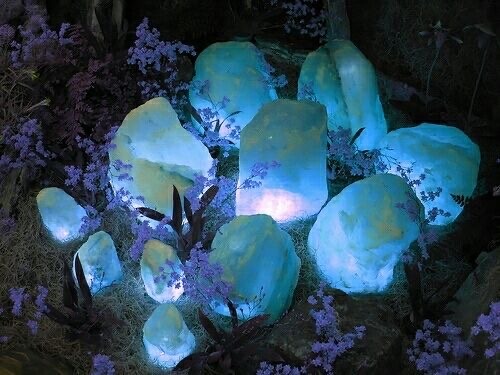

#aesthetic#fall season#goth#whimsical#whimsigoth#witchy vibes#whimsicore#spotify#caribbean blue#whimsigothic#winter#witchycore#winter season#<3
66 notes
·
View notes
Text
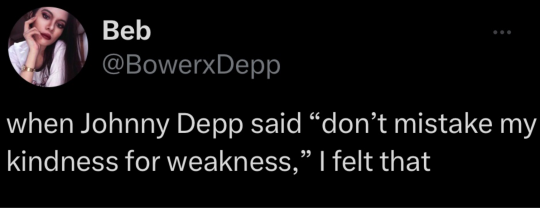
#quote#quotes#tweet#tweets#johnny depp#pirates of the caribbean#gellert grindelwald#grindelwald#prose#writing#spilled ink#spilled writing#spilled words#goth#gothic#writeblr#inspiring#spilled truth#spilled feelings#spilled heart#spilled thoughts#spilled emotions
31 notes
·
View notes
Text
he is who i learned what goth is from
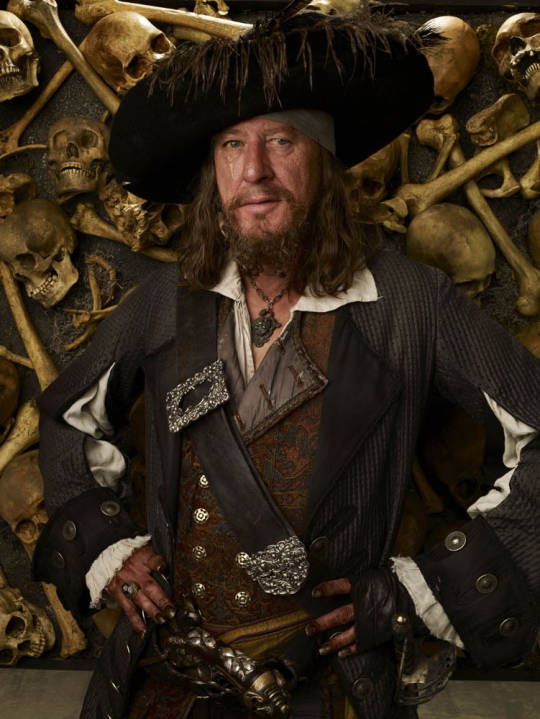
#respect for original goth icon#tbh it is my dream#to be a goth pirate#AND he was also cursed#undead#then actually died#and got resurrected#by weird witch bitch aka a god (also goth icon)#isn't that the life you'd want to live?#everyone show respect for#barbossa#pirates of the caribbean#potc
24 notes
·
View notes
Text
.......... laughs in high school having been 20 years ago.
anyway.
#texts.#when hot topic was about goths and metal and the only IP was Emily the Strange and Invader Zim.#lskdfjhsdlkjfh and also my hoodie with cat ears and pockets big enough for me to sneak my PSP into school.#jesus christ#mind you i was goth in the fucking caribbean. nothing says hardcore quite like dressing in black and 5+ layers in 90F degrees#with 80% humidity.
4 notes
·
View notes
Text

Jouvert mawning……follow my insta for more @v_the_first_
#alt girl#emo aesthetic#emocore#altfashion#emo as hell#dark aesthetic#explore#grunge#pinterest#grungy aesthetic#carnival 2023#jouvert#carnival aesthetic#caribbean#belize#alternative goth#emo scene#2014 grunge#2000s scene#corpse party#night
10 notes
·
View notes
Text

I've had this shirt since middle school
#me#self#goth#makeup#alternative#long hair#pale#piercings#black hair#goth girl#pirates of the caribbean#johnny depp#goth model#gothic fashion#gothic#nu goth#goth aesthetic#soft goth#goth gf#mall goth#alternative girl#alt fashion#alternative fashion#septum piercing#black and grey tattoos#tattoos#tattoo#traditional tattoo#girls with tattoos
85 notes
·
View notes
Text

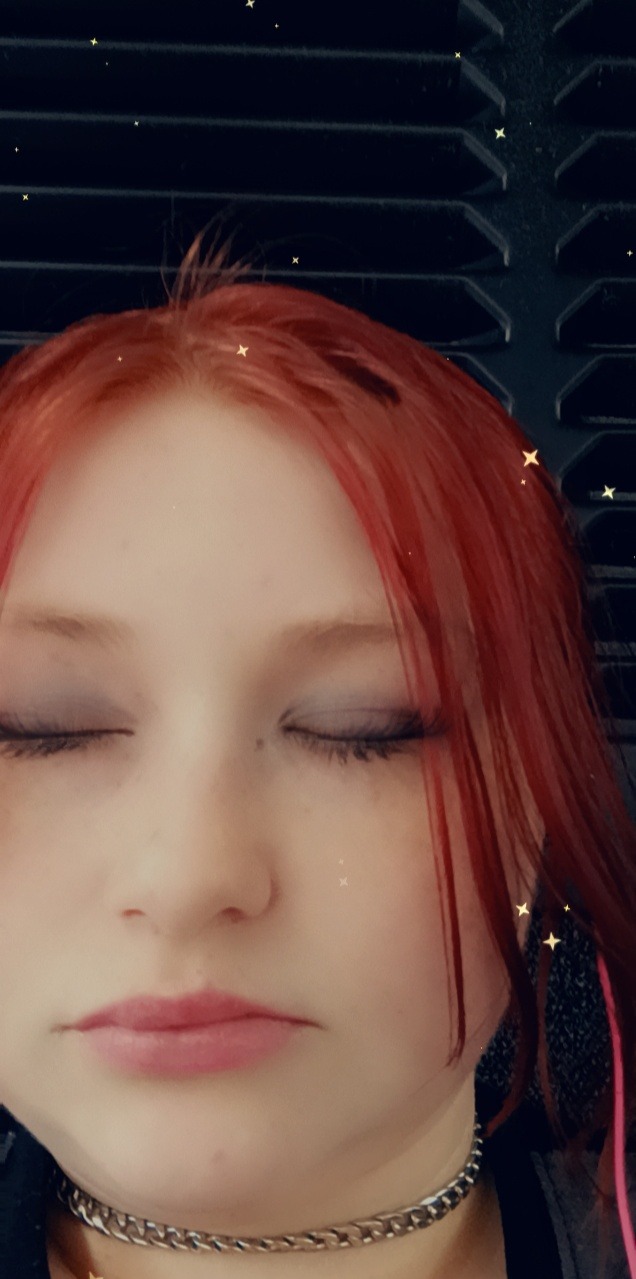
dead men tell no tales.
magic kingdom today. im pirate themed
#dm me#selfie#dms open#pretty girl#babygirl#goth girl#it me!!#goth aesthetic#emo#emo girl#pirates of the caribbean#pirates#disney world
14 notes
·
View notes
Video
youtube
Music video to “Reach Out” by Santo Domingo, Dominican Republic-based post-punk revival band LÖST, featuring Carolus Cat of Mexican gothwave band Animal Rojo
#postpunk#gothwave#gothic post punk#alternative music#LÖST#Reach Out#music#Dominican#Caribbean Islands#crossover#international goth#Animal Rojo#Carolus Cat#Mexican#music video#Lost#Lost band#Dominican goth#Caribbean goth#Mexican goth#Latino goth
4 notes
·
View notes
Text

#johnny depp#dior#dior sauvage#gellert grindelwald#willy wonka#wonka#grindelwald#fantastic beasts#pirates of the caribbean#jack sparrow#goth#gothic#american gothic#southern gothic#southern goth aesthetic#cowboycore#ruralcore#rural america#rural gothic#rural#rural photography#rural living#cowboy
126 notes
·
View notes
Text
So I accidentally almost got into an argument on Twitter, and now I'm thinking about bad historical costuming tropes. Specifically, Action Hero Leather Pants.
See, I was light-heartedly pointing out the inaccuracies of the costumes in Black Sails, and someone came out of the woodwork to defend the show. The misunderstanding was that they thought I was dismissing the show just for its costumes, which I wasn't - I was simply pointing out that it can't entirely care about material history (meaning specifically physical objects/culture) if it treats its clothes like that.
But this person was slightly offended on behalf of their show - especially, quote, "And from a fan of OFMD, no less!" Which got me thinking - it's true! I can abide a lot more historical costuming inaccuracy from Our Flag than I can Black Sails or Vikings. And I don't think it's just because one has my blorbos in it. But really, when it comes down to it...
What is the difference between this and this?
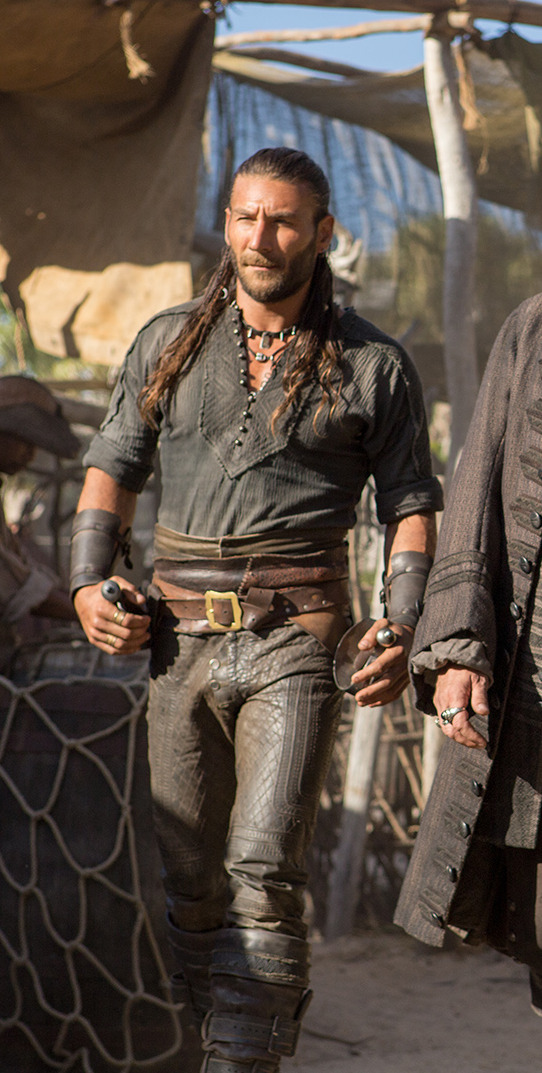
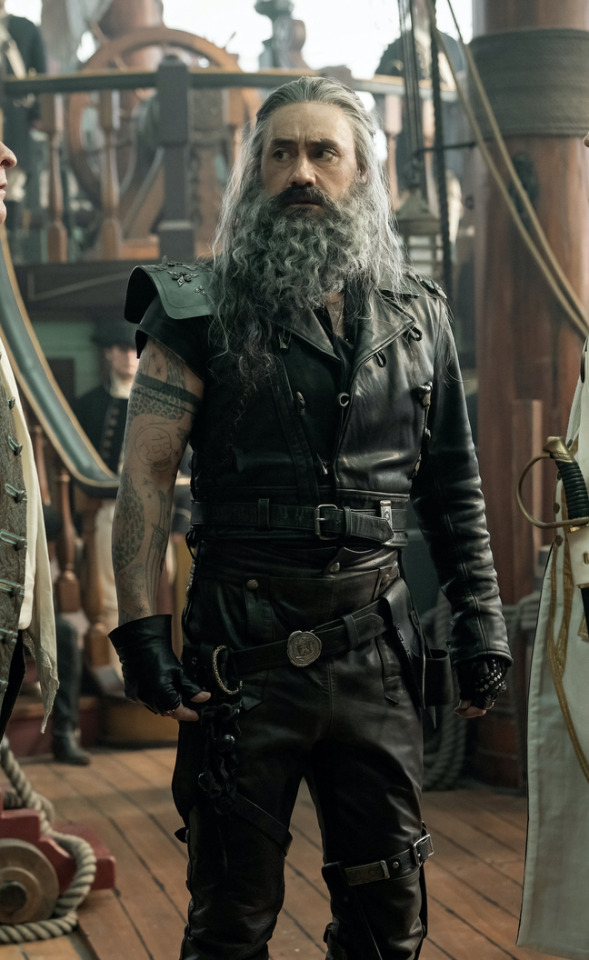
Here's the thing. Leather pants in period dramas isn't new. You've got your Vikings, Tudors, Outlander, Pirates of the Caribbean, Once Upon a Time, Will, The Musketeers, even Shakespeare in Love - they love to shove people in leather and call it a day. But where does this come from?

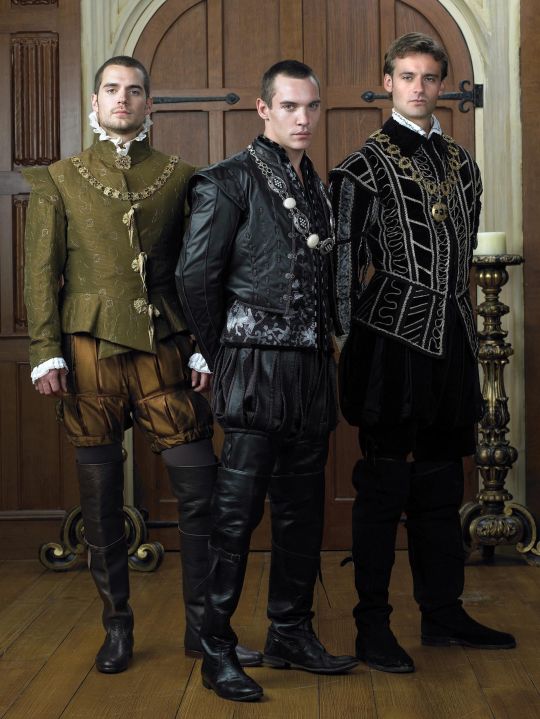
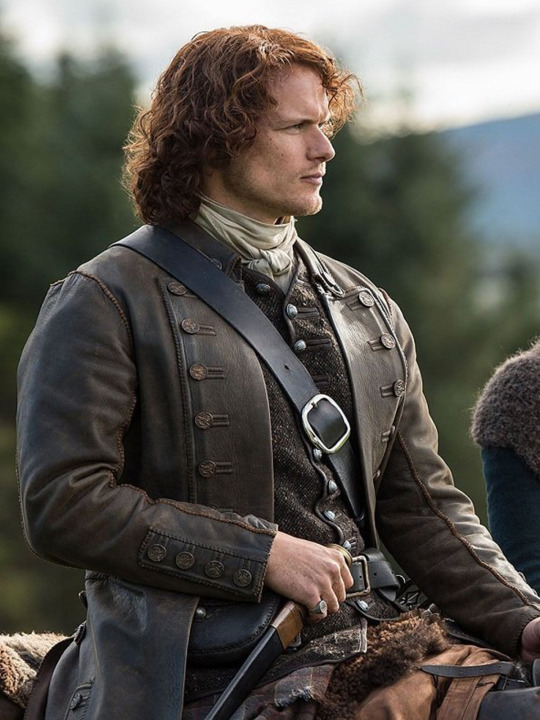

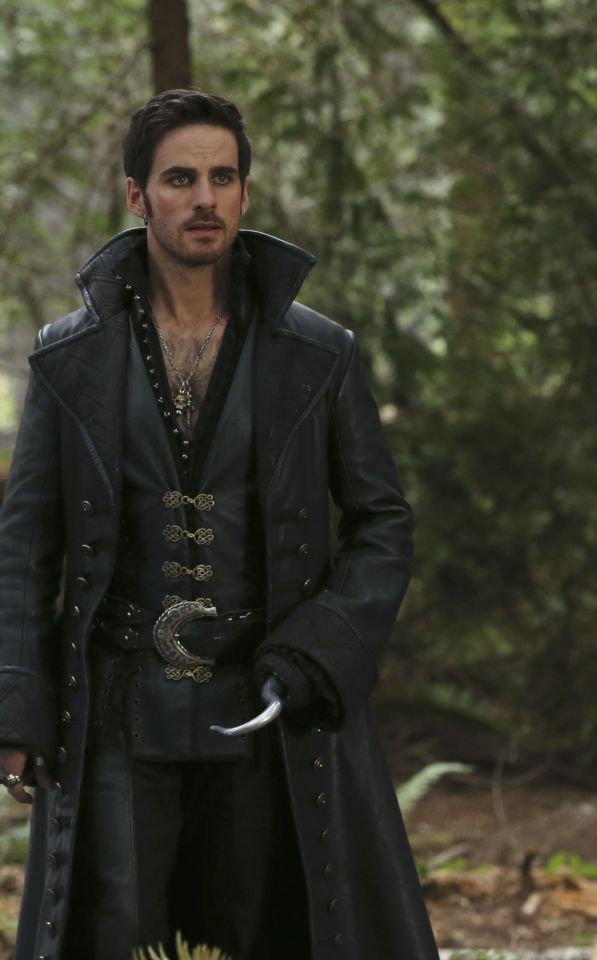
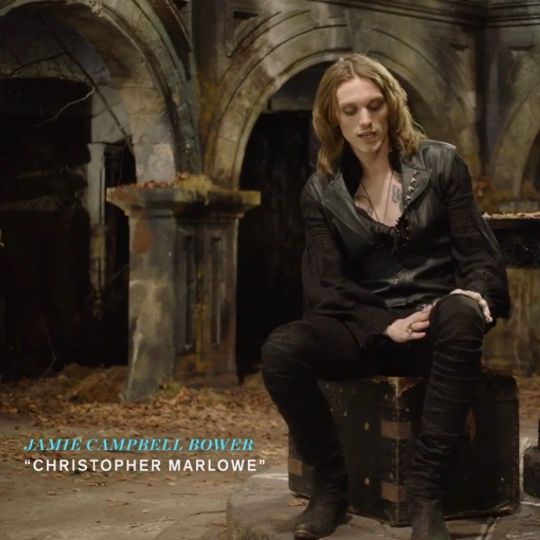
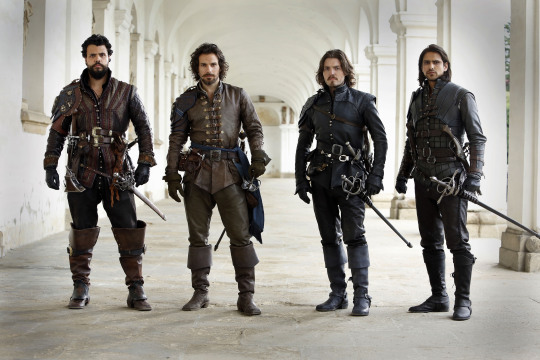

Obviously we have the modern connotations. Modern leather clothes developed in a few subcultures: cowboys drew on Native American clothing. (Allegedly. This is a little beyond my purview, I haven't seen any solid evidence, and it sounds like the kind of fact that people repeat a lot but is based on an assumption. I wouldn't know, though.) Leather was used in some WWI and II uniforms.
But the big boom came in the mid-C20th in motorcycle, punk/goth, and gay subcultures, all intertwined with each other and the above. Motorcyclists wear leather as practical protective gear, and it gets picked up by rock and punk artists as a symbol of counterculture, and transferred to movie designs. It gets wrapped up in gay and kink communities, with even more countercultural and taboo meanings. By the late C20th, leather has entered mainstream fashion, but it still carries those references to goths, punks, BDSM, and motorbike gangs, to James Dean, Marlon Brando, and Mick Jagger. This is whence we get our Spikes and Dave Listers in 1980s/90s media, bad boys and working-class punks.


And some of the above "historical" design choices clearly build on these meanings. William Shakespeare is dressed in a black leather doublet to evoke the swaggering bad boy artist heartthrob, probably down on his luck. So is Kit Marlowe.
But the associations get a little fuzzier after that. Hook, with his eyeliner and jewellery, sure. King Henry, yeah, I see it. It's hideously ahistorical, but sure. But what about Jamie and Will and Ragnar, in their browns and shabby, battle-ready chic? Well, here we get the other strain of Bad Period Drama Leather.
See, designers like to point to history, but it's just not true. Leather armour, especially in the western/European world, is very, very rare, and not just because it decays faster than metal. (Yes, even in ancient Greece/Rome, despite many articles claiming that as the start of the leather armour trend!) It simply wasn't used a lot, because it's frankly useless at defending the body compared to metal. Leather was used as a backing for some splint armour pieces, and for belts, sheathes, and buckles, but it simply wasn't worn like the costumes above. It's heavy, uncomfortable, and hard to repair - it's simply not practical for a garment when you have perfectly comfortable, insulating, and widely available linen, wool, and cotton!
As far as I can see, the real influence on leather in period dramas is fantasy. Fantasy media has proliferated the idea of leather armour as the lightweight choice for rangers, elves, and rogues, a natural, quiet, flexible material, less flashy or restrictive than metal. And it is cheaper for a costume department to make, and easier for an actor to wear on set. It's in Dungeons and Dragons and Lord of the Rings, King Arthur, Runescape, and World of Warcraft.

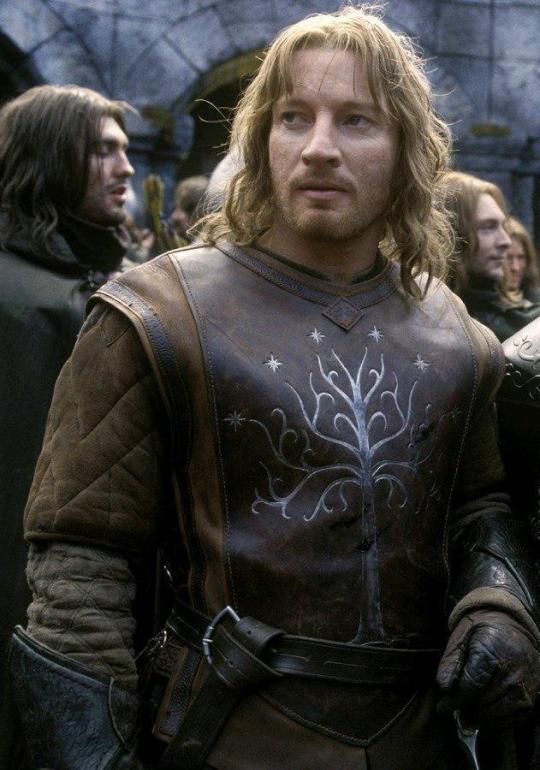
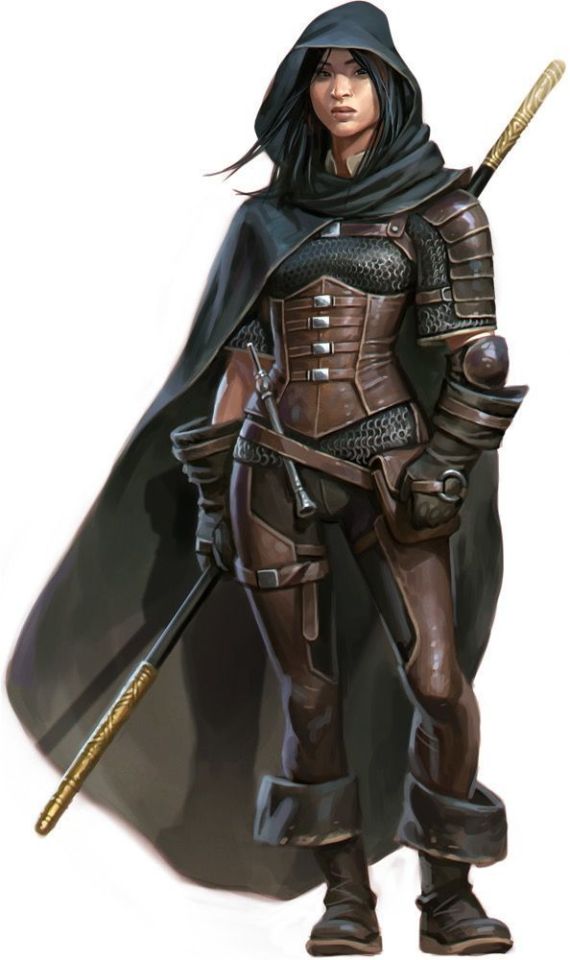
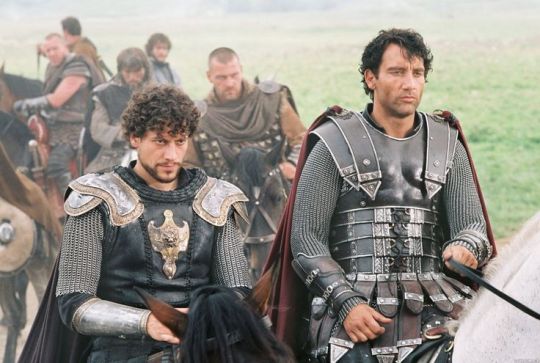

And I think this is how we get to characters like Ragnar and Vane. This idea of leather as practical gear and light armour, it's fantasy, but it has this lineage, behind which sits cowboy chaps and bomber/flight jackets. It's usually brown compared to the punk bad boy's black, less shiny, and more often piecemeal or decorated. In fact, there's a great distinction between the two Period Leather Modes within the same piece of media: Robin Hood (2006)! Compare the brooding, fascist-coded villain Guy of Gisborne with the shabby, bow-wielding, forest-dwelling Robin:


So, back to the original question: What's the difference between Charles Vane in Black Sails, and Edward Teach in Our Flag Means Death?
Simply put, it's intention. There is nothing intentional about Vane's leather in Black Sails. It's not the only leather in the show, and it only says what all shabby period leather says, relying on the same tropes as fantasy armour: he's a bad boy and a fighter in workaday leather, poor, flexible, and practical. None of these connotations are based in reality or history, and they've been done countless times before. It's boring design, neither historically accurate nor particularly creative, but much the same as all the other shabby chic fighters on our screens. He has a broad lineage in Lord of the Rings and Pirates of the Caribbean and such, but that's it.
In Our Flag, however, the lineage is much, much more intentional. Ed is a direct homage to Mad Max, the costuming in which is both practical (Max is an ex-cop and road warrior), and draws on punk and kink designs to evoke a counterculture gone mad to the point of social breakdown, exploiting the thrill of the taboo to frighten and titillate the audience.
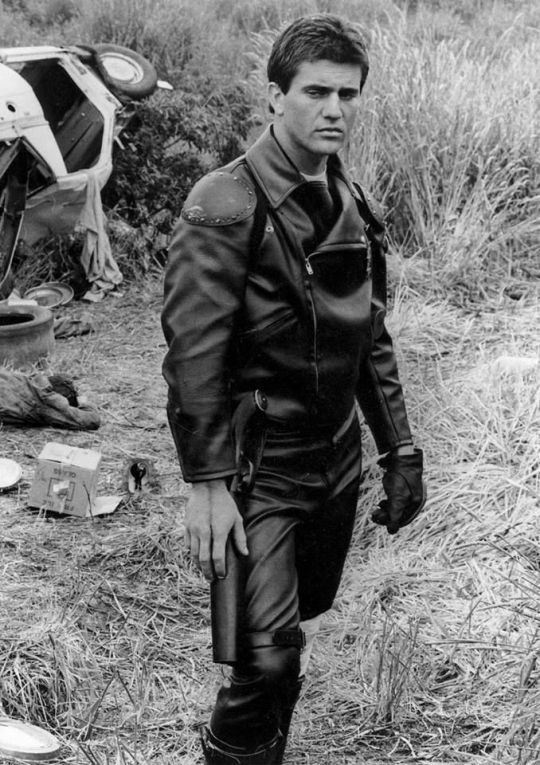
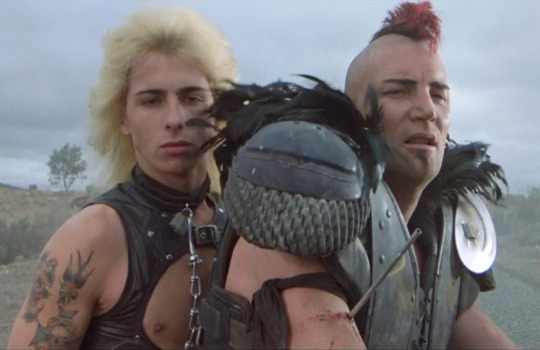
In particular, Ed is styled after Max in the second movie, having lost his family, been badly injured, and watched the world turn into an apocalypse. He's a broken man, withdrawn, violent, and deliberately cutting himself off from others to avoid getting hurt again. The plot of Mad Max 2 is him learning to open up and help others, making himself vulnerable to more loss, but more human in the process.

This ties directly into the themes of Our Flag - it's a deliberate intertext. Ed's emotional journey is also one from isolation and pain to vulnerability, community, and love. Mad Max (intentionally and unintentionally) explores themes of masculinity, violence, and power, while Max has become simplified in the popular imagination as a stoic, badass action hero rather than the more complex character he is, struggling with loss and humanity. Similarly, Our Flag explores masculinity, both textually (Stede is trying to build a less abusive pirate culture) and metatextually (the show champions complex, banal, and tender masculinities, especially when we're used to only seeing pirates in either gritty action movies or childish comedies).
Our Flag also draws on the specific countercultures of motorcycles, rockers, and gay/BDSM culture in its design and themes. Naturally, in such a queer show, one can't help but make the connection between leather pirates and leather daddies, and the design certainly nods at this, with its vests and studs. I always think about this guy, with his flat cap so reminiscient of gay leather fashions.

More overtly, though, Blackbeard and his crew are styled as both violent gangsters and countercultural rockstars. They rove the seas like a bikie gang, free and violent, and are seen as icons, bad boys and celebrities. Other pirates revere Blackbeard and wish they could be on his crew, while civilians are awed by his reputation, desperate for juicy, gory details.
This isn't all of why I like the costuming in Our Flag Means Death (especially season 1). Stede's outfits are by no means accurate, but they're a lot more accurate than most pirate media, and they're bright and colourful, with accurate and delightful silks, lace, velvets, and brocades, and lovely, puffy skirts on his jackets. Many of the Revenge crew wear recognisable sailor's trousers, and practical but bright, varied gear that easily conveys personality and flair. There is a surprising dedication to little details, like changing Ed's trousers to fall-fronts for a historical feel, Izzy's puffy sleeves, the handmade fringe on Lucius's red jacket, or the increasing absurdity of navy uniform cuffs between Nigel and Chauncey.
A really big one is the fact that they don't shy away from historical footwear! In almost every example above, we see the period drama's obsession with putting men in skinny jeans and bucket-top boots, but not only does Stede wear his little red-heeled shoes with stockings, but most of his crew, and the ordinary people of Barbados, wear low boots or pumps, and even rough, masculine characters like Pete wear knee breeches and bright colours. It's inaccurate, but at least it's a new kind of inaccuracy, that builds much more on actual historical fashions, and eschews the shortcuts of other, grittier period dramas in favour of colour and personality.
But also. At least it fucking says something with its leather.
#everyone say 'thank you togas' for not including a long tangent about evil rimmer in red dwarf 5x05#Our Flag Means Death#Togas does meta#and yes these principles DO fall apart slightly in s2 and i DON'T like those costumes as much#don't get me wrong they're fun and gorgeous - but generally a bit less deep and more inaccurate. so. :(#I'm not sure this really says anything new about Our Flag but I just needed to get my thoughts out#i hate hate hate Gritty Period Drama costumes they're so boring and so ugly and so wrong#god bless OFMD for using more than 3 muted colours and actually putting men in heels (and not as a shorthand for rich/foppish villainy) <3#looking at that Tudors still is insane like they really will go to any lengths to not make men feel like they've got bare legs XD#image descriptions in alt text#and yes i DID just sink about two hours into those so you'd better appreciate them
1K notes
·
View notes
Link
Vincent Van Gogh Head of a Skeleton with Burning Cigarette in Jamaica Colors
#vincent van gogh#head of a skeleton with burning cigarette#jamaica#jamaican#painting#art#artwork#artists#famous paintings#famous painters#caribbean#smokers#420#skeleton#goth#gothic#punk rock#vintage
1 note
·
View note
Text
The People I'd Like To Get To Know Better Tag Game
Tagged by the lovely @lucifers-horror-harem (thank you Lottie, this was a welcome distraction~)
Last Song/Album: "Alive" from the Jekyll & Hyde musical soundtrack
Favorite color: blue or black. Technically both. I love blues, especially deeper blues but black has also always been my color. I've gravitated towards it since I was young. (I was born to be goth rofl.)
Sweet, spicy or savory: this one is weird. In the last five years, especially this past year, my tolerance for anything sweet has drastically diminished. I still love savory stuff but I have to be in the mood. And my spice tolerance has increased in a weird balancing act to the growing intolerance for sweets? So...spicy, I guess?
Last TV show: starting a Gravity Falls rewatch baybeeeee
Last film: Pirates of the Caribbean: At World's End
Last thing I looked up online: I'm honestly not sure
Relationship status: Married
Current obsession: Twisted Wonderland (secondary obsession is still horror media, and Disney properties are sort of a side focus/satellite thing as a result of the TWST obsession; I cannot stress enough this silly little mobile game became both a SpIn and a hyperfixation in record time and it's been going strong since late October 2023 and shows no signs of stopping. Also, though it technically falls under the umbrella of horror media, thanks The Magnus Protocol for reigniting the magpod hyperfixation)
No pressure tags: @changeofheart69 @tixdixl @inmateofthemind @oathofoaks (yes I know that I know you guys already and you're my besties but I wanted to make sure you knew I was thinking about you and wanted to include you) @silverscribe87 @trensu @horrorobsessor @blithesharem @thehollowwriter @snailsrneat @theleechyskrunkly @rainesol and anyone who wants to grab this tag and run with it is free to!
161 notes
·
View notes
Note
hi! SUPER interesting excerpt on ants and empire; adding it to my reading list. have you ever read "mosquito empires," by john mcneill?
Yea, I've read it. (Mosquito Empires: Ecology and War in the Greater Caribbean, 1620-1914, basically about influence of environment and specifically insect-borne disease on colonial/imperial projects. Kinda brings to mind Centering Animals in Latin American History [Few and Tortorici, 2013] and the exploration of the centrality of ecology/plants to colonialism in Plants and Empire: Colonial Bioprospecting in the Atlantic World [Schiebinger, 2007].)
If you're interested: So, in the article we're discussing, Rohan Deb Roy shows how Victorian/Edwardian British scientists, naturalists, academics, administrators, etc., used language/rhetoric to reinforce colonialism while characterizing insects, especially termites in India and elsewhere in the tropics, as "Goths"; "arch scourge of humanity"; "blight of learning"; "destroying hordes"; and "the foe of civilization". [Rohan Deb Roy. “White ants, empire, and entomo-politics in South Asia.” The Historical Journal. October 2019.] He explores how academic and pop-sci literature in the US and Britain participated in racist dehumanization of non-European people by characterizing them as "uncivilized", as insects/animals. (This sort of stuff is summarized by Neel Ahuja, describing interplay of race, gender, class, imperialism, disease/health, anthropomorphism. See Ahuja's “Postcolonial Critique in a Multispecies World.”)
In a different 2018 article on "decolonizing science," Deb Roy also moves closer to the issue of mosquitoes, disease, hygiene, etc. explored in Mosquito Empires. Deb Roy writes: 'Sir Ronald Ross had just returned from an expedition to Sierra Leone. The British doctor had been leading efforts to tackle the malaria that so often killed English colonists in the country, and in December 1899 he gave a lecture to the Liverpool Chamber of Commerce [...]. [H]e argued that "in the coming century, the success of imperialism will depend largely upon success with the microscope."''
Deb Roy also writes elsewhere about "nonhuman empire" and how Empire/colonialism brutalizes, conscripts, employs, narrates other-than-human creatures. See his book Malarial Subjects: Empire, Medicine and Nonhumans in British India, 1820-1909 (published 2017).
---
Like Rohan Deb Roy, Jonathan Saha is another scholar with a similar focus (relationship of other-than-human creatures with British Empire's projects in Asia). Among his articles: "Accumulations and Cascades: Burmese Elephants and the Ecological Impact of British Imperialism." Transactions of the Royal Historical Society. 2022. /// “Colonizing elephants: animal agency, undead capital and imperial science in British Burma.” BJHS Themes. British Society for the History of Science. 2017. /// "Among the Beasts of Burma: Animals and the Politics of Colonial Sensibilities, c. 1840-1940." Journal of Social History. 2015. /// And his book Colonizing Animals: Interspecies Empire in Myanmar (published 2021).
---
Related spirit/focus. If you liked the termite/India excerpt, you might enjoy checking out this similar exploration of political/imperial imagery of bugs a bit later in the twentieth century: Fahim Amir. “Cloudy Swords” e-flux Journal Issue #115. February 2021.
Amir explores not only insect imagery, specifically caricatures of termites in discourse about civilization (like the Deb Roy article about termites in India), but Amir also explores the mosquito/disease aspect invoked by your message (Mosquito Empires) by discussing racially segregated city planning and anti-mosquito architecture in British West Africa and Belgian Congo, as well as anti-mosquito campaigns of fascist Italy and the ascendant US empire. German cities began experiencing a non-native termite infestation problem shortly after German forces participated in violent suppression of resistance in colonial Africa. Meanwhile, during anti-mosquito campaigns in the Panama Canal zone, US authorities imposed forced medical testing of women suspected of carrying disease. Article features interesting statements like: 'The history of the struggle against the [...] mosquito reads like the history of capitalism in the twentieth century: after imperial, colonial, and nationalistic periods of combatting mosquitoes, we are now in the NGO phase, characterized by shrinking [...] health care budgets, privatization [...].' I've shared/posted excerpts before, which I introduce with my added summary of some of the insect-related imagery: “Thousands of tiny Bakunins”. Insects "colonize the colonizers". The German Empire fights bugs. Fascist ants, communist termites, and the “collectivism of shit-eating”. Insects speak, scream, and “go on rampage”.
---
In that Deb Roy article, there is a section where we see that some Victorian writers pontificated on how "ants have colonies and they're quite hard workers, just like us!" or "bugs have their own imperium/domain, like us!" So that bugs can be both reviled and also admired. On a similar note, in the popular imagination, about anthropomorphism of Victorian bugs, and the "celebrated" "industriousness" and "cleverness" of spiders, there is: Claire Charlotte McKechnie. “Spiders, Horror, and Animal Others in Late Victorian Empire Fiction.” Journal of Victorian Culture. December 2012. She also addresses how Victorian literature uses natural science and science fiction to process anxiety about imperialism. This British/Victorian excitement at encountering "exotic" creatures of Empire, and popular discourse which engaged in anthropormorphism, is explored by Eileen Crist's Images of Animals: Anthropomorphism and Animal Mind and O'Connor's The Earth on Show: Fossils and the Poetics of Popular Science, 1802-1856.
Related anthologies include a look at other-than-humans in literature and popular discourse: Gothic Animals: Uncanny Otherness and the Animal With-Out (Heholt and Edmunson, 2020). There are a few studies/scholars which look specifically at "monstrous plants" in the Victorian imagination. Anxiety about gender and imperialism produced caricatures of woman as exotic anthropomorphic plants, as in: “Murderous plants: Victorian Gothic, Darwin and modern insights into vegetable carnivory" (Chase et al., Botanical Journal of the Linnean Society, 2009). Special mention for the work of Anna Boswell, which explores the British anxiety about imperialism reflected in their relationships with and perceptions of "strange" creatures and "alien" ecosystems, especially in Aotearoa. (Check out her “Anamorphic Ecology, or the Return of the Possum.” Transformations. 2018.)
And then bridging the Victorian anthropomorphism of bugs with twentieth-century hygiene campaigns, exploring "domestic sanitation" there is: David Hollingshead. “Women, insects, modernity: American domestic ecologies in the late nineteenth century.” Feminist Modernist Studies. August 2020. (About the cultural/social pressure to protect "the home" from bugs, disease, and "invasion".)
---
In fields like geography, history of science, etc., much has been said/written about how botany was the key imperial science/field, and there is the classic quintessential tale of the British pursuit of cinchona from Latin America, to treat mosquito-borne disease among its colonial administrators in Africa, India, and Southeast Asia. In other words: Colonialism, insects, plants in the West Indies shaped and influenced Empire and ecosystems in the East Indies, and vice versa. One overview of this issue from Early Modern era through the Edwardian era, focused on Britain and cinchona: Zaheer Baber. "The Plants of Empire: Botanic Gardens, Colonial Power and Botanical Knowledge." May 2016. Elizabeth DeLoughrey and other scholars of the Caribbean, "the postcolonial," revolutionary Black Atlantic, etc. have written about how plantation slavery in the Caribbean provided a sort of bounded laboratory space. (See Britt Rusert's "Plantation Ecologies: The Experiential Plantation [...].") The argument is that plantations were already of course a sort of botanical laboratory for naturalizing and cultivating valuable commodity plants, but they were also laboratories to observe disease spread and to practice containment/surveillance of slaves and laborers. See also Chakrabarti's Bacteriology in British India: laboratory medicine and the tropics (2012). Sharae Deckard looks at natural history in imperial/colonial imagination and discourse (especially involving the Caribbean, plantations, the sea, and the tropics) looking at "the ecogothic/eco-Gothic", Edenic "nature", monstrous creatures, exoticism, etc. Kinda like Grove's discussion of "tropical Edens" in the colonial imagination of Green Imperialism.
Dante Furioso's article "Sanitary Imperialism" (from e-flux's Sick Architecture series) provides a summary of US entomology and anti-mosquito campaigns in the Caribbean, and how "US imperial concepts about the tropics" and racist pathologization helped influence anti-mosquito campaigns that imposed racial segregation in the midst of hard labor, gendered violence, and surveillance in the Panama Canal zone. A similar look at manipulation of mosquito-borne disease in building empire: Gregg Mitman. “Forgotten Paths of Empire: Ecology, Disease, and Commerce in the Making of Liberia’s Plantation Economy.” Environmental History. 2017. (Basically, some prominent medical schools/departments evolved directly out of US military occupation and industrial plantations of fruit/rubber/sugar corporations; faculty were employed sometimes simultaneously by fruit companies, the military, and academic institutions.) This issue is also addressed by Pratik Chakrabarti in Medicine and Empire, 1600-1960 (2014).
---
Meanwhile, there are some other studies that use non-human creatures (like a mosquito) to frame imperialism. Some other stuff that comes to mind about multispecies relationships to empire:
Lawrence H. Kessler. “Entomology and Empire: Settler Colonial Science and the Campaign for Hawaiian Annexation.” Arcadia (Spring 2017)
No Wood, No Kingdom: Political Ecology in the English Atlantic (Keith Pluymers)
Archie Davies. "The racial division of nature: Making land in Recife". Transactions of the Institute of British Geographers Volume 46, Issue 2, pp. 270-283. November 2020.
Yellow Fever, Race, and Ecology in Nineteenth-Century New Orleans (Urmi Engineer Willoughby, 2017)
Pasteur’s Empire: Bacteriology and Politics in France, Its Colonies, and the World (Aro Velmet, 2022)
Tom Brooking and Eric Pawson. “Silences of Grass: Retrieving the Role of Pasture Plants in the Development of New Zealand and the British Empire.” The Journal of Imperial and Commonwealth History. August 2007.
Under Osman's Tree: The Ottoman Empire, Egypt, and Environmental History (Alan Mikhail)
The Herds Shot Round the World: Native Breeds and the British Empire, 1800-1900 (Rebecca J.H. Woods, 2017)
Imperial Bodies in London: Empire, Mobility, and the Making of British Medicine, 1880-1914 (Kristen Hussey, 2021)
Red Coats and Wild Birds: How Military Ornithologists and Migrant Birds Shaped Empire (Kirsten Greer, 2020)
Animality and Colonial Subjecthood in Africa: The Human and Nonhuman Creatures of Nigeria (Saheed Aderinto, 2022)
Imperial Creatures: Humans and Other Animals in Colonial Singapore, 1819-1942 (Timothy P. Barnard, 2019)
Biotic Borders: Transpacific Plant and Insect Migration and the Rise of Anti-Asian Racism in America, 1890-1950 (Jeannie N. Shinozuka)
85 notes
·
View notes
Text
Dark Grey Matter: Neurodivergence and the Goth Experience
[originally posted here]
Alternative subcultures have existed for nearly as long as human society. Modern examples include the flappers of the 1920s, the beatniks of the 1950s, and the hippies of the 1960s. These alternative subcultures have been defined by music, literature, fashion, and film. For those outside of these subcultures, it may be unclear what would make one wish to exist in a group that is not part of the norm. While there are many factors for each individual, it is clear that neurodivergence plays at least part of a role for many people. For the case study, I will be using the goth scene, being a member myself and because it is both newer and longer lasting than some of the others, being what to subcultures as water is to liquids, if you may. There have already been analyses of specific post-punk musicians and their neurodivergent diagnoses - Gary Numan and David Byrne being autistic, Danny Elfman with his ADHD/OCD combo, and Blixa Bargeld being synesthesic, not to mention speculation about countless others. This is not one of those. The musicians are important, but this is more about the members of the subculture as a whole, whether they produce music or not. This is also not to say that every goth or person in any given alternative subculture is neurodivergent or that every neurodivergent person is involved in an alternative subculture, just an observation on the overlap between the two.
To start us off, let us focus on what is typically seen as central to the goth subculture: the music. There are currently a myriad of subgenres of goth music: darkwave, deathrock, gothic rock, and ethereal wave, among others. It is sometimes difficult to define goth music as a whole, especially with bands that bleed into non-goth specific post-punk genres, such as shoegaze or industrial and with different terminology being more popular in different regions and eras. A rough definition for all of these subgenres would be a variety of alternative rock music with origins in punk (though some have influence that includes glam rock, synthpop, and even Caribbean-British dub reggae) that typically values minor chords, a heavy bassline that dictates the melody, slower rhythms, mezzo vocals, and artful, often dark lyrics. Why would this genre appeal to neurodivergent people specifically? The initial appeal is the sound. A common comorbidity with autism, ADHD, and other variations of neurodivergence is Auditory Processing Disorder or other differences in sound processing. Those thusly impacted may respond to verbal cues more slowly, be irritated by certain sounds more easily than others, and mishear words more frequently. There are numerous hypotheses to address differences in musical taste and likely multiple contributing factors and differences in audio processing may be one of those factors. While not every instance of APD is exactly the same, it is easy to see how a music genre that focuses on deeper pitches, more pronounced vocal styles, and slower rhythms would aurally appeal to individuals who experience auditory processing differences.
Aside from the way that the music sounds, there is also great appeal in the lyrical content. Certainly, goth bands touch on a variety of topics, from the historical monologues on the World Wars by Joy Division and the Pagan rites of Inkubus Sukkubus to the scathing diatribes of 1980s conservative politics by Sisters of Mercy and the sexual escapades explored by London After Midnight, just to name a few. Across the diverse set of subjects that these bands cover, there is a consistent return to one recurring theme: being an outsider observing an imperfect world. The experience of feeling like an outsider is certainly one that many neurodivergent individuals can relate to. Many neurodivergent individuals are made to feel like outsiders from a young age, often bullied by their peers for their communication styles and told by family members to behave differently, traits they have difficulty controlling. With differences in communication and internalizing the world, it is difficult to make sense of supposed social rules and forge connections. When one has similar requirements to exist happily as others but difficulty obtaining them due to reasons outside of one’s control, it is easy to recognize the world as a flawed place full of inequality and rewards for shallow traits. There is hope for those whose auditory processing differences do not manifest in alternative music, at least not exclusively. Fortunately for youth of today who still feel like outsiders, be it due to neurodivergence or anything else, but still have more mainstream aural preferences, modern pop artists are less afraid of embracing oddity and touching on feelings of isolation. Some may even serve as bridges for those with a taste for multiple genres as some pop artists have expressed an appreciation for goth artists. One now-former member of One Direction previously cited Joy Division’s Unknown Pleasures as a primary music inspiration, Dua Lipa did a photoshoot that made an homage to Siouxsie Sioux, and Billie Eilish has been seen performing in an Alien Sex Fiend shirt.
Of tertiary importance to the scene compared to music but more obvious to those not involved in the scene is fashion and makeup. The way that neurodivergent people often do not internalize social norms, current trends are often similarly not internalized, so dressing according to any sort of trend is not even considered. That being said, clothes are not necessarily chosen at random either. Something of utmost importance to many neurodivergent individuals when choosing clothes, as with many of their neurotypical counterparts, is comfort. This sometimes manifests in more obvious physical ways, such as removing tags or avoiding certain fabrics. It is easy to see how a scene that values DIY aesthetics would appeal to those with sensory differences; no one can fault one for cutting off a tag when the entire outfit is cut up and put back together with safety pins. However, there are also ways to achieve psychological comfort. Case in point, Blixa Bargeld, founding member of German industrial band Einstürzende Neubauten and arguably founder of the industrial music genre as well as former guitarist of Nick Cave and the Bad Seeds, has attributed his preference for wearing all black to to his synesthesia and finding other colors to be too overwhelming. Many black-wearers have made similar statements, with or without a diagnosis of synesthesia or something similar. Neurodivergent people also often find comfort in wearing clothing related to one’s special interest, so band shirts are a common staple, along with outfits that homage musicians, movie characters, or others they admire. There is also the issue of expression. Neurotypical people often have difficulty reading the emotions of their neurodivergent peers due to differences in emotional expression. Clothing and makeup, in addition to highlighting one’s general interests, can also help in making emotional expression more obvious to others. Of later importance, many neurodivergent individuals find that dressing in a way that labels them as a person with certain interests, this can help them attract others of similar interests. Given that many neurodivergent people have difficulty making friends and initiating social interactions, having an easy way to call to others that they are like them is socially beneficial.
In conclusion, it is clear why there is a connection between these two. Alternative subcultures are a welcoming environment for many who feel like outsiders are neurodivergent individuals are often made into outsiders by default. In addition, the sounds and sights of goth specifically appeal to many of those with specific sensory differences. With such a long, rich history that continues to this day, this subculture is fit to be quite a rewarding special interest.
40 notes
·
View notes